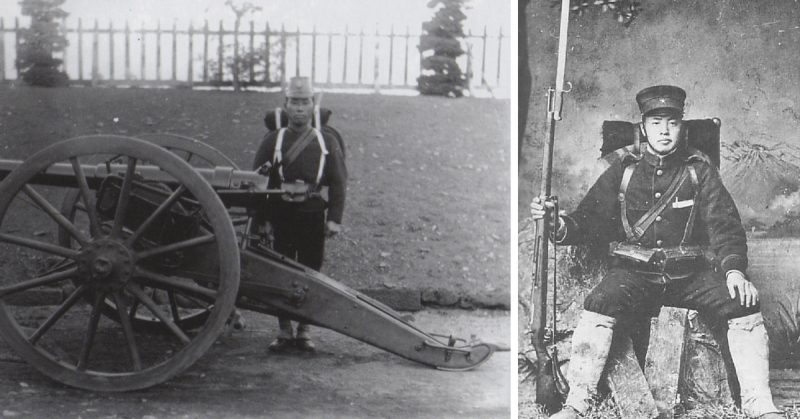Part of Japan’s imperial efforts during the First Sino-Japanese War of 1894-1895 included the conquest of Taiwan. Having tried to take the island once before, the burgeoning Empire of Japan was determined to succeed where once they failed.
Known as the Pescadores Campaign for the islands near Taiwan, the Japanese efforts to take the islands took place from March 23rd to the 25th of 1895. The Chinese offered little resistance, and, as so often happens in island campaigns, disease inflicted the bulk of the casualties, claiming a fourth of the Japanese forces, who were understaffed and poorly supplied for the campaign.
Thanks to gentleman adventurer/reporter James W. Davidson, the brief Pescadores Campaign was carefully documented, as the Japanese reporters focused on the mainland assaults.
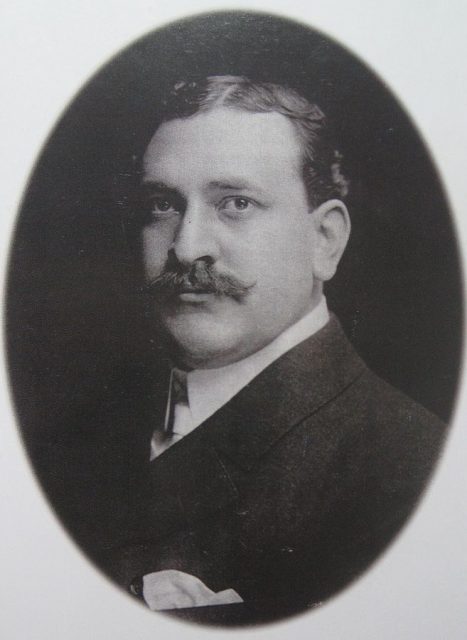
Davidson wrote extensively on the campaign, noting, “Bad weather on the 21st and 22nd prevented an immediate attack on the forts; but on the 23rd, the storm having abated, the ships got underway, and at 9.30 a.m., upon the first flying squadron drawing near Hau-chiau [候角?], the fleet subjected the Kon-peh-tai fort to a heavy bombardment, to which the Chinese replied for nearly an hour before they were silenced.”
With the fort silenced for the time being, the troop ships started unloading men and supplies on shore. “The 1st, 2nd, 3rd and 4th Companies of the 1st Regiment of reserves under the command of Colonel Hishijima, were all landed in less than two hours,” Davidson reported. The fort responded to the landing with renewed fire, but did little to slow the Japanese advance.
Having disembarked, the on-shore troops engaged in a skirmish with Chinese soldiers defending a knoll near the disembarkation point. According to Davidson, “After a few volleys from the Japanese, answered by an irregular fire from the Chinese, the latter eventually fled, leaving the position in the hands of the Japanese. Staff-quarters were then established in the village of Chien-shan [尖山社].”
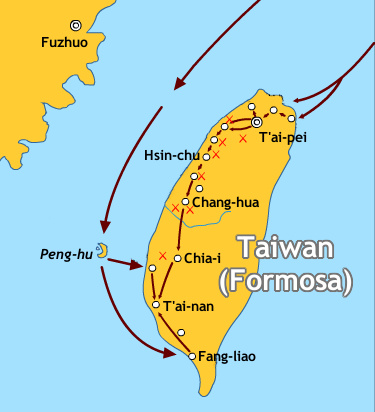
Having set up base, the Japanese prepared to take the fort and silence its guns for good. Davidson wrote, “At 2.30 on the morning of the 24th, the troops advanced with the intention of taking the Kon-peh-tai fort and Makung (Bako) with a temporary company of mountain artillery under Captain Arai and the naval contingent with quick-firing guns under Naval Lieutenant Tajima.”
A maze of ditches slowed the Japanese progress, but by 4:00 AM the Japanese forces, led by the 2nd Battalion of the 1st Regiment of reserves, according to Davidson, advanced on the fort.
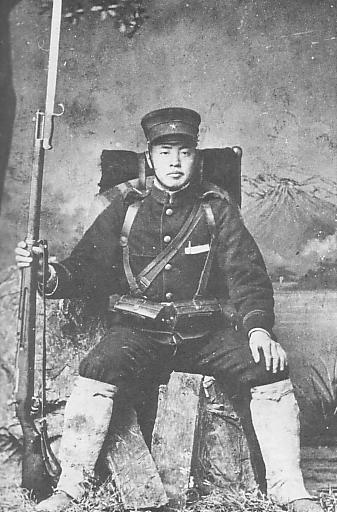
“The 5th Company,” he reported, “under the command of Captain Kinoshita, formed the advance guard, and a detachment of this company, under command of Lieutenant Ishii, were the first to engage the Chinese forces, 200 of whom had taken up a position outside the fort and appeared to dispute the advance of the Japanese. The engagement was very brief, the Chinese flying before the small number of determined Japanese.”
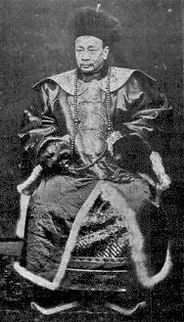
The mountain artillery, meanwhile, “had been shelling the fort from a position too far distant to do much damage to the stronghold, but in a manner sufficiently effective to frighten out the garrison, who left in such haste that, thirty minutes after the first gun had been fired, the Japanese were in possession. Thus was the principal port captured in the Pescadores.”
Facing little opposition from the token forces arrayed against them, the Japanese advanced on the Pescadores capital, Makung. The assault force in Makung encountered as little opposition as the previous assaults, and, according to Davidson, “1st Company stormed the Chinese infantry encampment, being followed soon after by the 2nd Company, which dashed through the gateway with the intention of dividing into three sections and attacking the enemy from different sides.
But, to their amazement, their plans were found unnecessary, the garrison, with the exception of some thirty who did make a slight show of resistance, having fled. Some shots were fired at a few stragglers, and at 11.50 a.m. the occupation of the city was complete.”
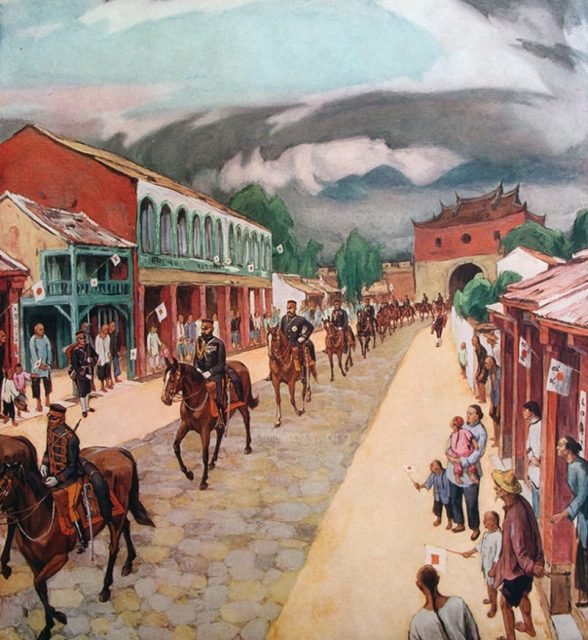
Across the islands, forts and garrisons gave little resistance to the Japanese forces arrayed against them, and in a matter of days the islands were in Japanese hands. Davidson’s reporting noted that “The Chinese prisoners, with the exception of eight officers, were given their liberty.
The spoils of the little campaign were considerable, including 18 cannon, 2,663 rifles, over a million rounds of ammunition, 797 casks, and 3,173 bags of powder, a thousand bags of rice, etc., etc. Rear-Admiral Tanaka occupied the post of first governor of the group, and a government office and military post offices were at once erected.”
With the Pescadores Campaign concluded, the Chinese Navy destroyed, Manchuria occupied, and the Chinese army demoralized and hiding in the mountains, the Japanese prepared for the end of the war. Loading up their military and civilian dignitaries, the Japanese prepared for a different kind of battlefield: the diplomatic negotiating table.
